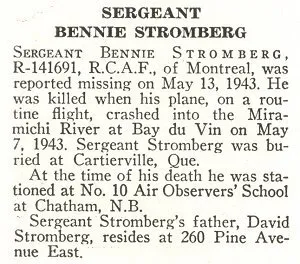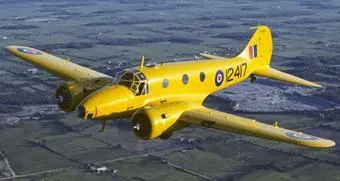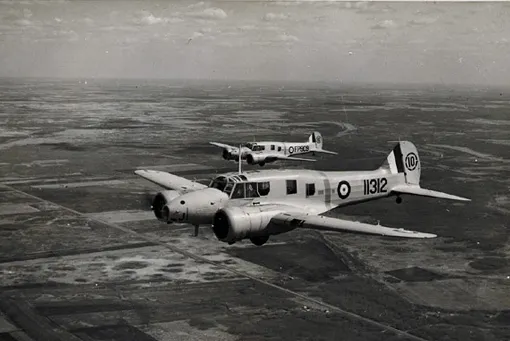Stromberg, Bennie (Sergeant)
Killed in Flying Accident 1943-May-08


Birth Date: 1924
Born:
Parents: Son of David and Annie Stromberg, of Montreal.
Spouse:
Home: Montreal, Quebec
Enlistment:
Enlistment Date: unkown date
Service
RCAF
Unit
10 AOS- Air Observer School
Base
Chatham, New Brunswick, Canada
Rank
Sergeant
Position
Wireless Air Gunner
Service Numbers
R/141691
Home
Accident Card - Avro Anson Mk. I serial:6105
This accident involved 1 aircraft on 1943-May-08. Anson I s/n 6105.
This accident involved 4 people. Cohen M, Redmond DR, Stromberg B, Taylor H
This accident had 1 fatality. Sergeant Bennie Stromberg RCAF Killed in Flying Accident service no:R/141691 Anson 6105
Anson serial: 6105

Canadian Warplane Heritage Museum
The Museum's Anson Mk. V was built by MacDonald Brothers in Winnipeg in 1944. It flew with No. 7 Photographic Wing and No. 414 Squadron in Ottawa on photo survey work until the late 1940s. In 1956, it was purchased by INCO and used for mineral surveying until 1980, when it was donated to the Museum. The exterior is painted in the yellow colour common to all BCATP trainers and is in its same wartime RCAF markings.
The Avro Anson was known by a number of nicknames including "Faithful Annie" or "Flying Greenhouse". It was the first aircraft to be flown by the Royal Canadian Air Force to have a retractable undercarriage, which was a comparative novelty in 1936. In 1940, a Canadian government owned company, Federal Aircraft Limited, was created in Montreal to manufacture the Anson for Canadian use. Nearly 3,000 Anson aircraft were produced and, in the early days of the British Commonwealth Air Training Plan (BCATP), the Anson was the standard trainer for many pilots, observers (navigators), wireless operators and bomb aimers. More than 20,000 aircrew received training on the Anson. In Canadian service, the aircraft was substantially re-designed with the substitution of North American engines and many other airframe and equipment changes. Harold Skaarup web pages
Aircraft Images
Anson 6105
Anson Mk. I 6105
Ex RAF R9953. To No. 4 Training Command on 16 October 1940, for use by No. 3 Service Flying Training School at Calgary, Alberta. Category C damage at Calgary aerodrome at 10:10 on 2 February 1941. To No. 7 Service Flying Training School at Fort McLeod, Alberta. Category C1 damage at Fort McLeod on 26 January 1942. To Aircraft Repair in Edmonton for overhaul, 16 July to 19 September 1942. To No. 3 Training Command when completed. Category A crash into Miramichi Bay, near Fox Island, NB on 12 May 1943. To workshop reserve at No. 4 Repair Depot on 16 June 1943, for salvage action.1940-10-12 Taken on Strength Ottawa Car & Aircraft 2019-08-20
1941-February-02 Accident: 3 Service Flying Training School Loc: Aerodrome Names: Gately | Gordon
1942-January-27 Accident: 7 Service Flying Training School Loc: Aerodrome Macleod Names: Dicken
1943-May-08 Accident: 10 Air Observer School Loc: Hay Island Miramichi Bay New Brunswick Names: Cohen | Redmond | Stromberg | Taylor
1943-10-08 Struck off Strength 2019-08-20
Unit Desciption
10 AOS (10 Air Observer School)
Air Observers were later called "navigators". For recruits in this stream, the training path after ITS was 8 weeks at an Air Observer School (AOS), 1 month at a Bombing & Gunnery School, and finally 1 month at a Navigation School. The Air Observer schools were operated by civilians under contract to the RCAF. For example, Nos. 7, 8, and 9 were run by CP Airlines. However, the instructors were RCAF. The basic navigation techniques throughout the war years were dead reckoning and visual pilotage, and the tools were the aeronautical chart, magnetic compass, watch, trip log, pencil, Douglas protractor, and Dalton Navigational Computer. They trained in the Avro Anson.